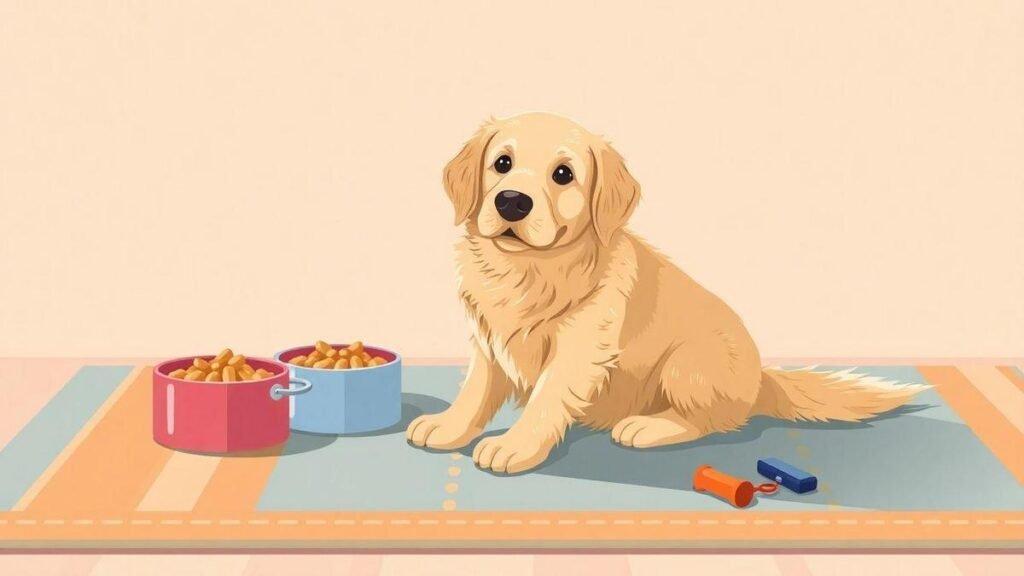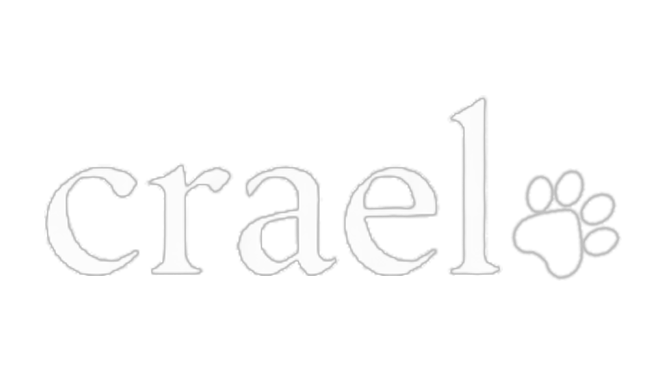Dicas para adestramento de filhotes em casa e técnicas de reforço positivo
I teach my pup with kindness. Training can feel overwhelming, so I choose adestramento positivo, small treats, and short, consistent sessions to keep learning joyful. I use a quick reward checklist, a simple potty routine, a cozy crate, and a gentle daily routine. I watch puppy signals and praise fast to lock in wins. I introduce people and pets slowly during the early window and reward calm, friendly behavior. I teach sit, stay, and come with clear steps and timely rewards. I reduce mouthing with bite-inhibition games and redirection to chew toys. I find triggers for barking and teach a calm quiet cue. The plan is easy, kind, and practical.
Key Takeaways (Dicas para adestramento de filhotes made easy)
- I set a simple routine so my puppy feels safe.
- I praise and give treats when my puppy does well.
- I keep training short and fun every day.
- I let my puppy meet new people and dogs slowly.
- I use a crate and patience for potty training.
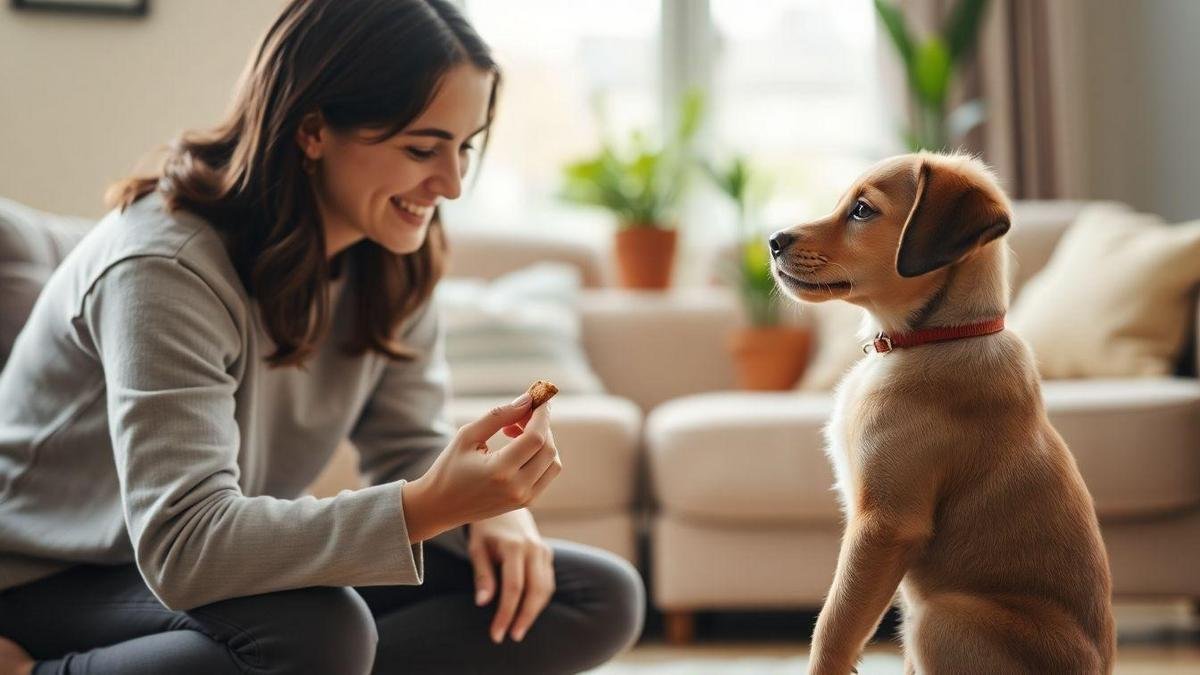
How I use Dicas para adestramento de filhotes em casa e técnicas de reforço positivo for gentle home training
I teach with gentle steps and clear rewards. I treat training like planting seeds: small care now gives big growth later. The phrase Dicas para adestramento de filhotes em casa e técnicas de reforço positivo guides my rewards and routines: calm voice, small treats, short practice moments, and steady praise. For step-by-step basics and building trust early on I follow methods similar to those in how to build trust with a newly adopted pet.
Why I choose adestramento positivo para filhotes and small treats
I pick adestramento positivo para filhotes because it builds trust. Praise and treats make learning fun; small treats keep pups engaged without filling them. I avoid scolding to keep stress low and progress steady.
- I reward the exact moment the pup does the right thing.
- I use a calm tone and consistent cues.
- I phase from treats to praise and pets as the behavior becomes reliable.
| Benefit | What I see |
|---|---|
| Faster recall | Pup comes more when praised |
| Less fear | Pup stays relaxed during training |
| Clear learning | Action quickly links to reward |
How I keep sessions short and consistent for adestramento de filhotes fácil
Short sessions keep pups focused and happy. I do many short sessions daily and stop while the pup is still enjoying it. Repeating the same cue builds strong habits.
- Aim for 3–5 minutes per try.
- Do 4–6 sessions a day for young pups.
- Finish on a win so the pup feels good.
| Session length | Reps/day | Goal |
|---|---|---|
| 1–2 minutes | 6–8 | New skill intro |
| 3–5 minutes | 4–6 | Practice and proofing |
| 5–7 minutes | 2–3 | Combine commands calmly |
My quick reward checklist
I keep a small kit ready to move fast and stay calm.
- Tiny soft treats (pea-size)
- Clear cue word for each action
- Timer or phone alarm
- Quiet space with few distractions
- Praise (happy voice and pet) when not using treats
| Item | Why I use it |
|---|---|
| Tiny treats | Fast reward, low fill |
| Timer | Keeps sessions short |
| Quiet spot | Fewer interruptions |
If you want to use mealtimes intentionally, I pair some training with scheduled feeding and the techniques in how to use mealtime as training opportunities for dogs.
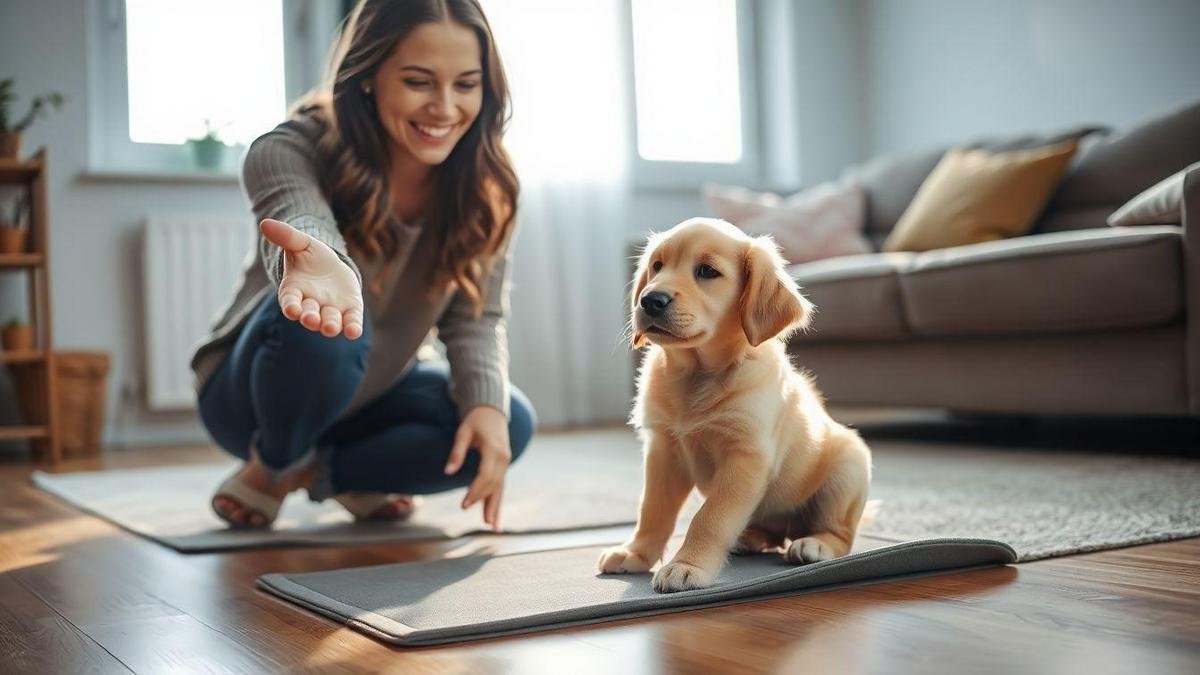
House training: getting xixi no lugar filhote reliably
How I set a potty schedule and use crate training
I made a clear schedule and stuck to it: feed at the same times and take the pup out after meals, naps, and play. I use a crate as a safe den, never punishment, and teach short, positive crate stays to build bladder control. Preparing the space and routines helped—see ideas in how to prepare your home for a new dog or cat and plan the day with principles from how to build a daily routine for your indoor pet.
Key points:
- Consistency with times and cues
- Short, frequent trips outside for young pups
- Calm, quick returns to the crate after potty time
| Age of puppy | Typical potty breaks/day | Notes |
|---|---|---|
| 8–12 weeks | 8–12 | Every 1–2 hours; after sleep and meals |
| 3–6 months | 6–8 | Gradually extend by 15–30 minutes |
| 6 months | 4–6 | Keep routine until solid training |
How I read puppy signals and praise fast to reinforce success
I watch for sniffing, circling, whining, or sudden restlessness. When I see a signal, I pause and take the pup out. If they go, I give instant, high-pitched praise and a tiny treat within two seconds to link action and reward. A short touch-check routine helps me spot subtle cues—similar ideas are in daily touch-check routine for dogs you can do at home.
Quick checklist:
- Watch for sniffing and circling
- Move calmly to the door; avoid delays
- Give instant praise and a small treat
| Signal | Action I take |
|---|---|
| Sniffing/circling | Pick up leash and go out |
| Whining at door | Open door immediately |
| Mid-play stop & squat | Pause play and go outside |
My step-by-step potty routine
- Take the pup to the same spot each time.
- Use one short cue like Go potty.
- Wait quietly up to 5 minutes.
- If success, give instant praise and one tiny treat.
- If no success, return calmly and try again in 10–20 minutes.
- Log accidents: time and possible cause to fix patterns.
Short note: keep treats tiny; too many make pups full and slow.
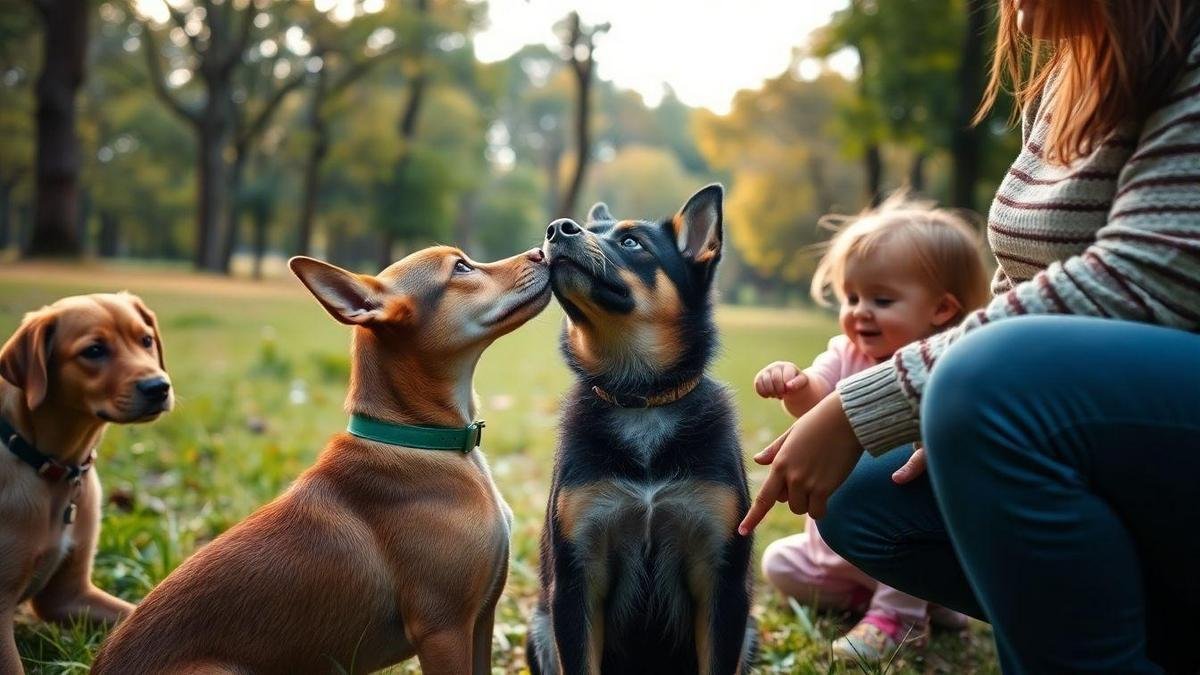
Socialization: introducing people and pets safely
I follow one rule: safety first and calm wins. I use Dicas para adestramento de filhotes em casa e técnicas de reforço positivo to plan rewards and routines, and I check with my vet before wide public outings. Every new meeting is a gentle handshake, not a sprint.
The 3–14 weeks window for gentle exposure
Puppies learn fast between 3–14 weeks. I introduce new experiences slowly: different people, other vaccinated pets at a gentle distance, and common noises at low volume. For controlled introductions with resident animals I follow steps similar to how to introduce a new puppy or kitten to older pets and the general home-introduction checklist in how to introduce a new pet to your home and other pets. For everyday exposures and gradual practice, see how to socialize your pet in everyday situations.
Keep meetings short (2–5 minutes). If the pup looks tense, back off and try again later. Mark small wins with quick praise or a tiny treat.
How I control pace and reward calm, friendly behavior
I set a threshold—the point where the pup is still comfortable—and stop before it’s crossed. Reward calm with treats, soft petting, or a favorite toy. If the pup jumps or barks, ignore that and reward the next calm moment. Use a leash to guide meetings and instruct visitors: no sudden moves, speak softly, and offer a treat only if the pup seeks it.
Socialization milestones tracker
| Age (weeks) | Milestone | Action |
|---|---|---|
| 3–5 | Comfortable with gentle handling | Short handling sessions; reward calm |
| 6–8 | Curious about new people and sounds | Meet one new person daily; low-volume noises |
| 9–11 | Relaxed around other calm dogs | Supervised, leashed greetings |
| 12–14 | Confident in short public outings | Calm walks in quiet spots; reward steadiness |
| Ongoing | Polite greetings, sits for attention | Reinforce with short practice and positive rewards |
I update this tracker after each session—notes on what worked help me repeat success.
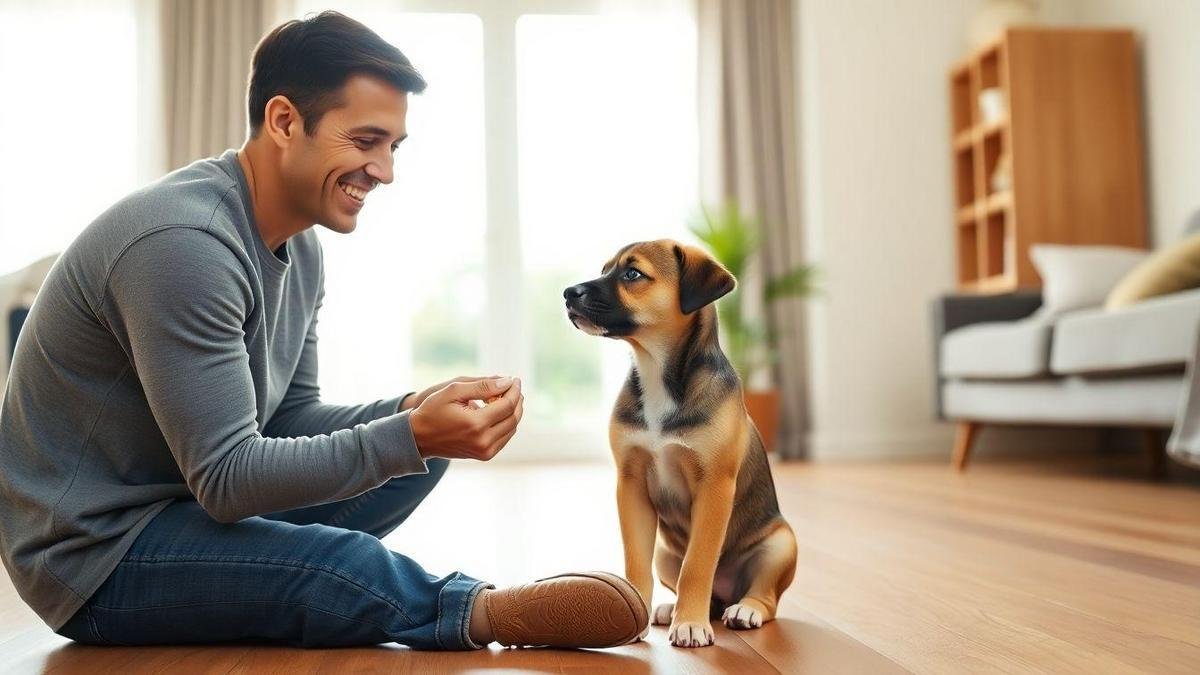
Teaching basic commands with clear, positive steps
How I teach sit, stay, and come using treats and timing
Start very short so the pup stays calm. For structured step-by-step obedience I follow principles from basic obedience training for adopted dogs.
- For sit: move a treat above the pup’s nose and back; when the pup sits, mark with a cheerful Yes! and give the treat. Repeat short sets twice daily.
- For stay: ask for sit first, show your open palm, say Stay, take one slow step back. If the pup holds for one second, return and reward. Add one second each success.
- For come: crouch, use an excited tone, show a treat, call Come! and pat your legs. Reward on arrival. Never call to scold.
If the pup looks overwhelmed, stop. Short wins build lasting habits. To help a pup relax into cue practice I also use ideas from teaching your dog to settle on command indoors.
| Command | Cue | Reward | Timing |
|---|---|---|---|
| Sit | Treat moved above nose | Treat praise | 5 min sessions, 2× daily |
| Stay | Hand palm out “Stay” | Return treat after hold | Add 1 sec per success |
| Come | Crouch excited “Come!” | Treat petting | Start 1–2 m, build distance |
How I practice short repeats and add distractions gradually
I do 3–5 quick reps per set, rewarding each success. Start in a quiet room, then add small distractions: a toy, a person at distance, or mild noise. Raise the challenge slowly; if the pup fails, step back one level.
| Stage | Setting | Distraction | Reps |
|---|---|---|---|
| 1 | Quiet room | None | 3–5 short reps |
| 2 | Same room | Toy nearby | 3–5 reps, reward every success |
| 3 | Yard | People at distance | 3–5 reps, add distance slowly |
| 4 | Park | Other dogs nearby | Short sets, high rewards |
My daily command practice plan
I train at set times and log progress.
| Time | Activity | Focus | Duration |
|---|---|---|---|
| Morning | Quick sit and come | Warm-up | 5 min |
| Midday | Short stay practice | Control | 5–7 min |
| Evening | Mixed commands play | Generalization | 7–10 min |
Adjust if the pup seems tired; end each day with calm petting to keep training positive.
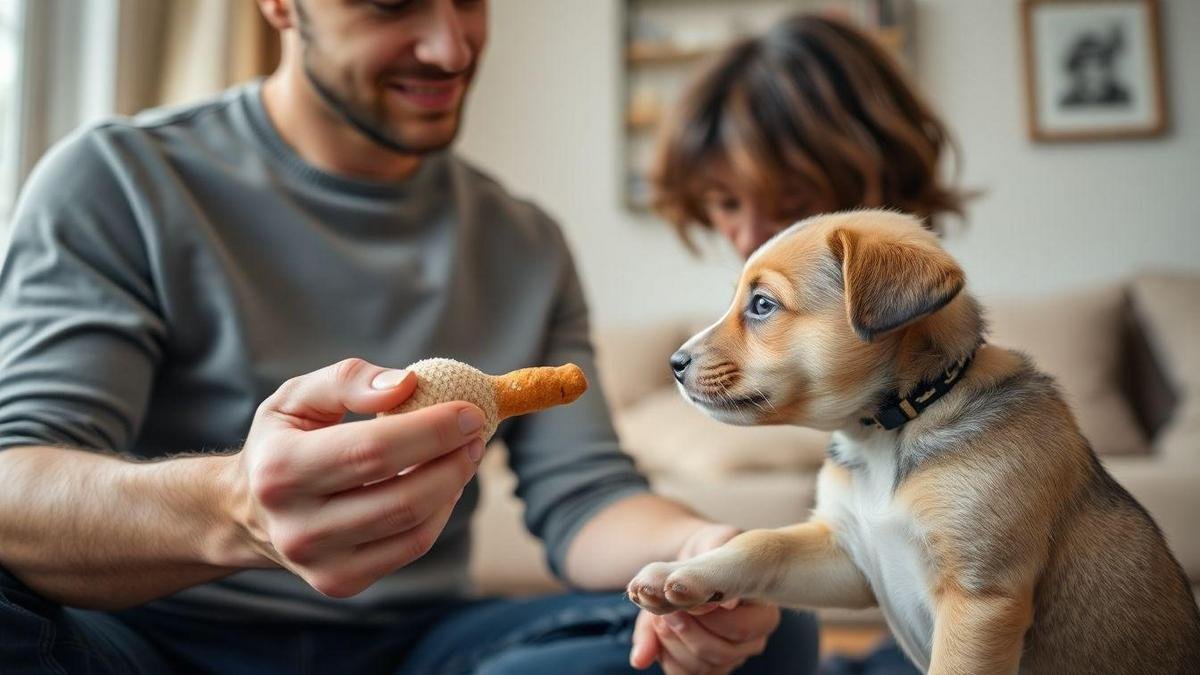
How I reduce mouthing and reduzir mordidas de filhote safely
Bite-inhibition games and praising soft mouths
I use safe games that teach a soft mouth. On a hard bite I give a short yelp or ouch, then pause play for a few seconds. Praise gentle mouthing with a happy, quiet tone and a tiny treat to link soft behavior with attention and rewards. For toys and enrichment that help with chewing control, I rotate options from a list like interactive dog toys to fight obesity and occasional puzzle snacks from DIY puzzle feeders for dogs using items you already have.
| Game | What I do | How I praise |
|---|---|---|
| Yelp & Pause | Let puppy mouth; yelp on hard bite; stop play 3–5 sec | Soft praise and treat when calm |
| Trade Game | Offer toy in exchange for mouthing item | Praise treat after swap |
| Gentle Tug (light) | Soft tug with low force; stop if teeth show | Calm praise and toy reward |
| Treat Exchange | Let puppy take food gently from hand | Immediate praise and repeat |
How I redirect to chew toys and stop rough play calmly
Swap to a chew toy immediately. Keep toys handy for quick swaps. Loud scolding excites pups; instead, stand up, turn away, and ignore for 10–30 seconds if play gets rough—teaching that rough play loses attention. Redirect with a simple command like sit to shift focus, then reward calm.
| Toy Type | Best for | Tip |
|---|---|---|
| Soft plush | Light mouthing | Keep one always handy |
| Rubber chew | Strong chewing | Freeze for teething relief |
| Rope toy | Tugging | Use only for controlled pulls |
My bite-reduction step plan
| Step | Action I take | Result I expect |
|---|---|---|
| 1. Set rules | Decide what mouthing is OK | Clear boundaries |
| 2. Teach bite games | Play yelp, trade, gentle tug | Pressure control |
| 3. Offer toys | Swap hands for toys when needed | Safe chewing habit |
| 4. Pause attention | Stop play on hard bites | Bites reduce over time |
| 5. Reward soft | Praise and treat gentle mouthing | Repeat good behavior |
| 6. Practice daily | Short sessions, many times | Faster learning |
Track progress and repeat earlier steps if needed.
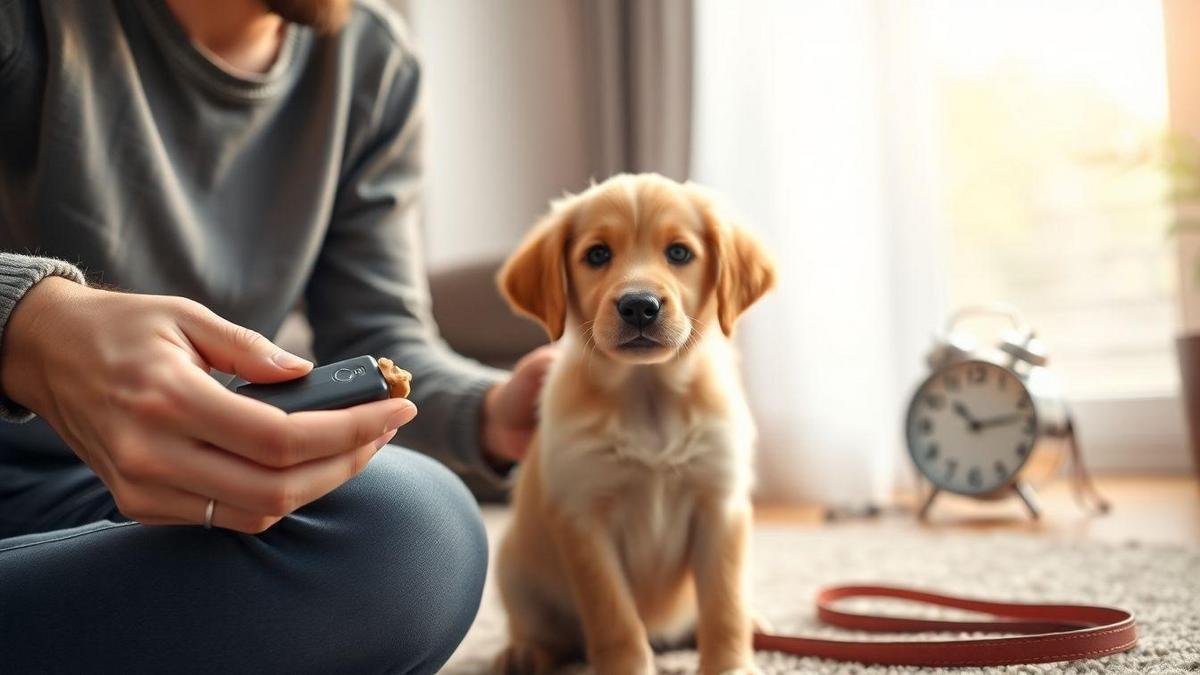
Controlling barking and building rotina e reforço positivo filhote
How I spot triggers and teach a reliable quiet cue (controle de latidos em filhotes)
I note time, sound, and body language. I act calmly and use positive reinforcement. For door knocks I wait for one bark, say Quiet softly, and reward the first quiet breath. I gradually increase challenge: quieter knocks first, then louder. Reward the first calm moment every time. For structured approaches to reduce noise-related barking I use tips from how to prevent excessive barking in indoor dogs.
| Trigger | My sign to act | First training step |
|---|---|---|
| Door knock | Alert stare, forward ears | Ask “Quiet”; treat when silent 1–2 sec |
| Stranger outside | Barking, pacing | Move pup to mat; cue “Quiet”; reward calm |
| Other dogs barking | Stiff body, howl | Turn away; cue “Quiet”; reward calm |
How I set a simple daily routine for training, play, and rest (treinamento doméstico para filhotes)
Predictable days cut stress and barking. I split the day into short chunks: train in the morning, play mid-day, rest after meals, always follow play with calm cooldowns. Avoid training when pup is overtired. For building consistent days I follow the outline in how to build a daily routine for your indoor pet, and when my schedule is tight I borrow ideas from how to keep your indoor dog active on a busy schedule.
| Time | Activity | Goal |
|---|---|---|
| Morning (15 min) | Short training session | Teach quiet cue, basics |
| Midday (10–15 min) | Active play | Burn energy, reduce anxious barking |
| After meals (30–60 min) | Quiet time on mat | Build rest habit, reward calm |
| Evening (10 min) | Gentle practice praise | Reinforce cues before bedtime |
My barking response script
- Step 1: Stop movement and lower my voice. Say “Hey” to get attention.
- Step 2: When the pup looks, say “Quiet” once, calmly.
- Step 3: Wait 1–2 seconds of silence.
- Step 4: Give a small treat and gentle praise: “Good quiet!”
- Step 5: Return to normal activity slowly.
If barking continues, remove the reward briefly and try again when the pup calms. Never yell.
Conclusion
Puppy training can feel like climbing a steep hill. I keep it simple: teach with kindness, using positive reinforcement, small treats, and short sessions so learning stays joyful. A steady routine—crate time, a clear potty schedule, and fast praise—builds reliable behavior. Focus on the early 3–14 weeks window for gentle socialization, and shape commands like sit, stay, and come with tiny, repeatable wins. Curb mouthing with bite-inhibition games and shape calm behavior with a reliable quiet cue. Many small, consistent steps make a strong wall.
If you feel overwhelmed, celebrate small victories, slow down when needed, and trust that consistency and patience win the day. Want more practical tips and gentle guides? Read more at https://blogcraelo.com.
Frequently Asked Questions
- Q: How do I start training my puppy at home?
A: Start with short games and clear cues. Use calm, trust-building steps like those in how to build trust with a newly adopted pet.
- Q: How can I house-train my puppy fast?
A: Set a simple routine, take your pup out often, and praise every success. A daily plan from how to build a daily routine for your indoor pet helps a lot.
- Q: How do I teach basic commands with treats?
A: Show the motion, say the word, and reward instantly. Keep treats tiny and fun and follow steps like basic obedience training for adopted dogs.
- Q: How long should my training sessions be?
A: Keep sessions short: 3–5 minutes multiple times a day for young pups; adjust as they grow. A calm morning routine can set the tone—see how to create a calm morning routine for your dog or cat.
- Q: What if my puppy ignores me or gets distracted?
A: Reduce distractions, make training playful, and celebrate small wins. If attention lapses are frequent, check for mental needs using signs your dog needs more mental stimulation and what to do.

